 Hence -,- = -76" dn that is a" : b" = c" : dn THEOREM IX. 23 1 If any number of quantities are proportional, any antecedent is to its consequent as the sum of all the antecedents is to the sum of all the consequents. Let a : b = c : d... Hence -,- = -76" dn that is a" : b" = c" : dn THEOREM IX. 23 1 If any number of quantities are proportional, any antecedent is to its consequent as the sum of all the antecedents is to the sum of all the consequents. Let a : b = c : d...  An Elementary Geometry and Trigonometry - Page 30by William Frothingham Bradbury - 1872 - 238 pagesFull view An Elementary Geometry and Trigonometry - Page 30by William Frothingham Bradbury - 1872 - 238 pagesFull view - About this book
 | G. Ainsworth - 1854 - 216 pages
...+ a"+ .... + o<"> :6 + 6, + 6"+ +bw=a:b. That is, if any quantities be in continued proportion, the sum of all the antecedents is to the sum of all the consequents as one of the antecedents is to its consequent. By the last proposition, a+o, : 6 + 6,=a, : b,=a" :... | |
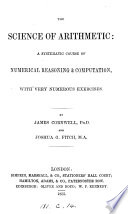 | James Cornwell - 1855 - 380 pages
...ratio. Hence they are equal to one another. 329. III. — If there be any number of equal ratios, the sum of all the antecedents is to the sum of all the consequents, as either of the antecedents is to its consequent* 3 : 5 : : 9 : 16 : : is : 30 : : 330 : 550. . 3... | |
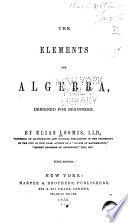 | Elias Loomis - Algebra - 1856 - 280 pages
...same ratio, the first will have ti> the second the same ratio that the sum of all the antecedents has to the sum of all the consequents. Let a, b, c, d, e, f be any number of proportional quantities, such that a: b: :c:d: : e:f, then will a:b: :a+c+e:b+d+f.... | |
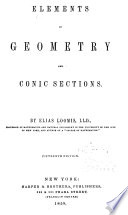 | Elias Loomis - Conic sections - 1858 - 256 pages
...quantities are proportional, any one ante cedent is to its consequent, as the sum of all the antecedents, it to the sum of all the consequents. Let A : B : : C : D : : E : F, &c. ; then will A : B : : A+C+E : B+D+F For, since A : B : : C : D, we have AxD=BxC. And, since A :... | |
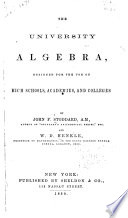 | John Fair Stoddard, William Downs Henkle - Algebra - 1859 - 538 pages
...Q. K D. PROPOSITION (394.) 13. In a continued proportion, any antecedent is to its consequent as the sum of all the antecedents is to the sum of all the consequents. DEMONSTRATION. Let a : b : : с : d : : e :f::y: h : : &c. We are to prove that a : 6 ;:a + c+e+g,... | |
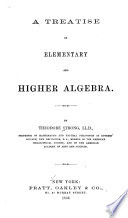 | Theodore Strong - Algebra - 1859 - 570 pages
...+ etc. BDP Hence, when (numbers or) quantities of the same kind are proportionals, we say that the sum, of all the antecedents is to the sum of all the consequents, as any antécédent is to it» consequent. (as.) If we have ^ = =: , and т> = т=ч> t^611 by adding... | |
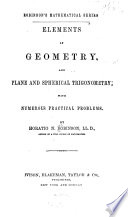 | Horatio Nelson Robinson - Geometry - 1860 - 470 pages
...magnitudes are proportional, any one of the antecedents will be to its consequent as the sum of all tht antecedents is to the sum of all the consequents. Let A, B, C, D, JB, etc., represent the several inagm tudes whi )h give the proportions To which we may annex the identical... | |
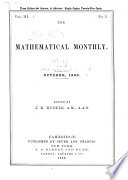 | Mathematics - 1860 - 294 pages
...-f- 5 -I- e t ions = — . I Since these ratios are equal, any antecedent is to its consequent as the sum of all the antecedents is to the sum of all the consequents ; therefore either fraction equals the sum of all the numerators divided by the mm of all the denominators,... | |
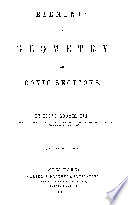 | Elias Loomis - Conic sections - 1861 - 244 pages
...are proportional, any one ante e&dent is to its consequent's the sum of all the antecedents* i& t& the sum of all the consequents. Let A : B : : C : D : : E : F, &c. ; then will A : B : : A+C+E : B+D+F For, since A : B : : C : D, we have AxD=BxC. And, since A :... | |
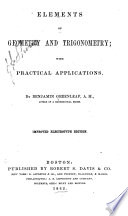 | Benjamin Greenleaf - Geometry - 1862 - 518 pages
...THEOREM. 147. If any number of magnitudes are proportional, any antecedent is to its consequent as the sum of all the antecedents is to the sum of all the consequents. Let A : B : : C : D : : E : F ; then will A:B::A+C + E:B + D + F. For, from the given proportion, we have AXD = BXC, and AXF = BX... | |
| |